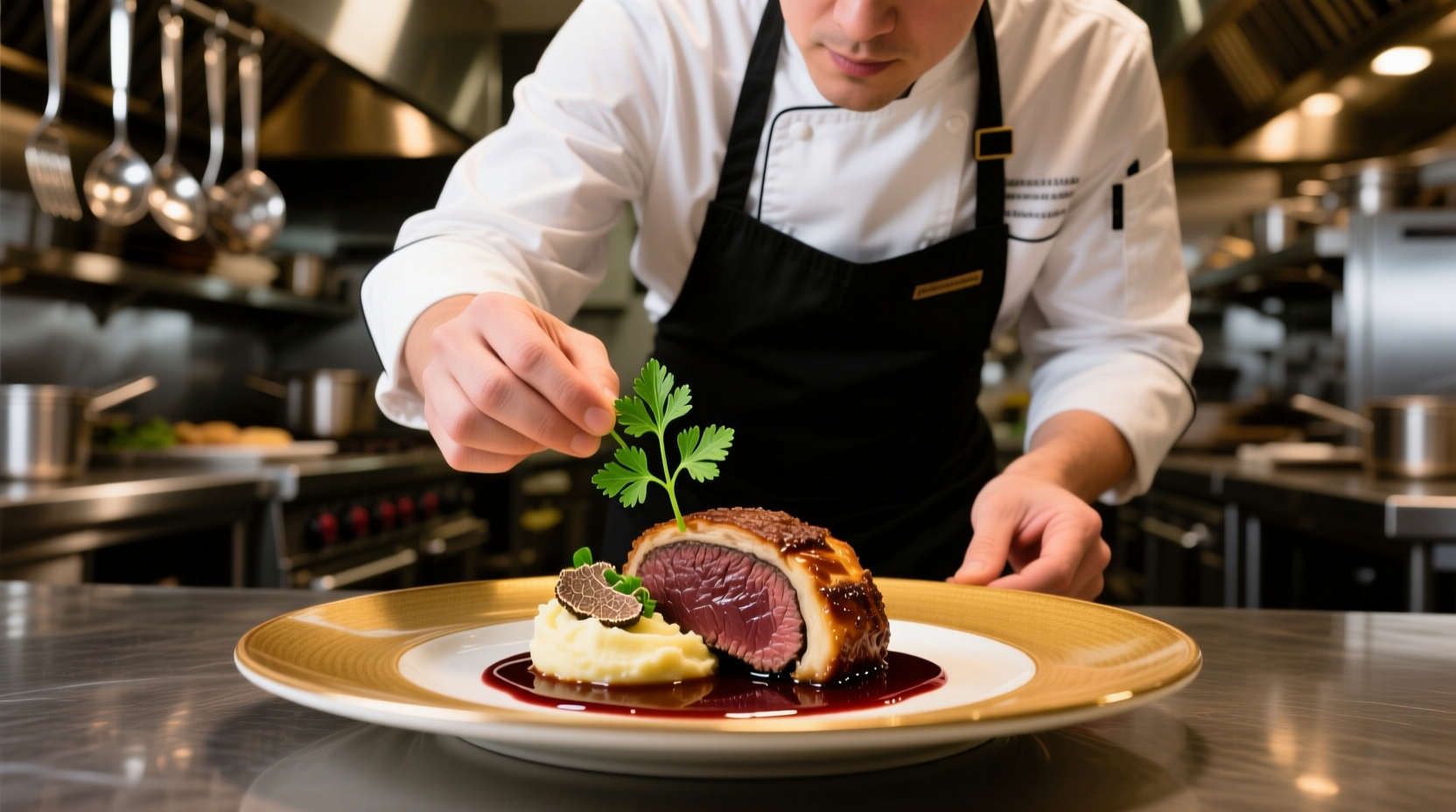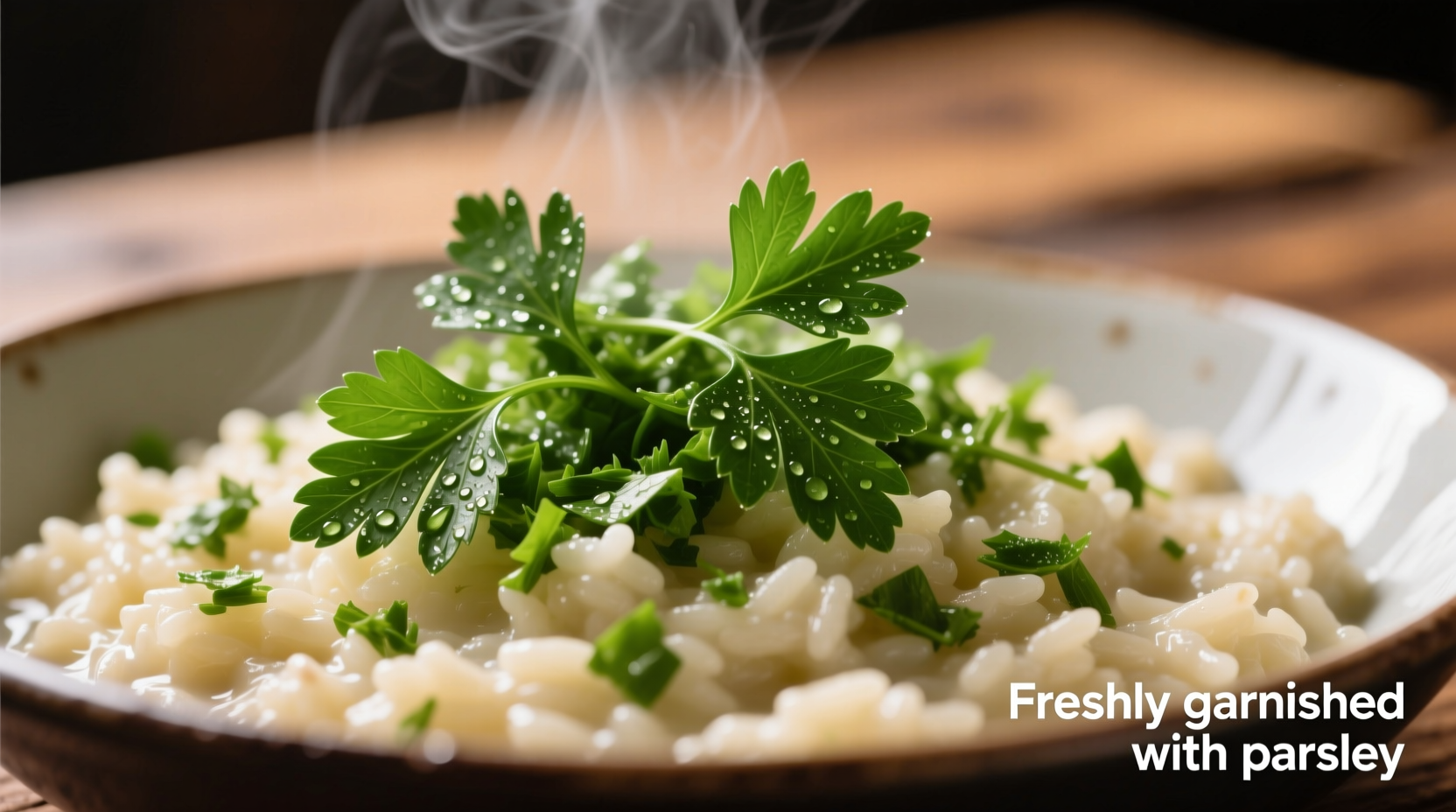Ever wonder why restaurant dishes look so much more appetizing than home-cooked meals? The secret often lies in thoughtful garnishing with parsley. This humble herb does far more than fill empty plate space—it signals freshness, creates visual contrast, and subtly influences how we perceive flavor. Master these techniques to instantly elevate your plating skills.
The Visual Science Behind Parsley Garnishing
Research from the International Journal of Gastronomy and Food Science confirms what chefs have known for centuries: color contrast significantly impacts flavor perception. The vibrant green of parsley against most food creates visual appeal that makes dishes appear fresher and more flavorful. When properly applied, parsley garnishes aren't just decoration—they're a psychological trigger that prepares the brain for a better eating experience.
| Parsley Type | Flavor Profile | Best Applications | Visual Impact |
|---|---|---|---|
| Flat-leaf (Italian) | Bolder, earthier flavor | Cooking applications, finishing sauces | Subtle, natural appearance |
| Curly parsley | Milder, slightly bitter | Plate garnishes, visual accents | High contrast, dramatic effect |
From Ancient Symbol to Modern Plating Essential
Parsley's journey from symbolic plant to kitchen staple reveals why it remains the garnish of choice. Historical records from the Encyclopædia Britannica show:
- Ancient Greece: Used in victory wreaths and associated with death (considered too sacred for consumption)
- Roman Era: Employed to mask garlic breath and as a decorative element at feasts
- 16th Century: Gained medicinal reputation for treating digestive issues
- 19th Century: Became standard restaurant garnish as French culinary techniques spread globally
- Modern Era: Recognized for both visual appeal and flavor-enhancing properties

Essential Preparation Techniques
Before you can garnish effectively, proper parsley preparation is crucial. Most home cooks make these critical mistakes:
Washing and Drying
Submerge parsley in cold water for 2 minutes to dislodge dirt, then spin dry in a salad spinner. The University of Minnesota Extension confirms that thorough drying prevents wilting and maintains crispness. Never skip this step—wet parsley wilts instantly on warm dishes.
Stem Management
Remove tough lower stems but retain tender upper stems for garnishing. Professional chefs use the "snap test"—if the stem bends without breaking, it's tender enough to use. Discard only the woody portions.
Professional Garnishing Methods
Move beyond the basic sprig with these restaurant-proven techniques:
The Strategic Sprig Placement
Position 3-5 sprigs leaning toward the diner at 10 o'clock position. This creates depth and invites interaction. Never place parsley directly in the center—it blocks the food's visual appeal.
Leaf Scattering Technique
For sauces and purees, scatter individual leaves in a deliberate pattern. Start with 5 leaves: place 3 near the protein, 1 near starch, and 1 near vegetables. This creates visual rhythm without appearing random.
Parsley Oil for Precision
Create vibrant green oil by blending 1 cup flat-leaf parsley with ½ cup neutral oil, then straining. Use in a squeeze bottle to add precise dots around the plate rim. This technique works especially well with white sauces or fish dishes where whole leaves might overwhelm.
When Parsley Garnishing Backfires
Understanding context boundaries prevents presentation disasters. The Food & Wine Culinary Institute identifies these critical limitations:
- Delicate seafood dishes: Strong parsley flavor can overwhelm subtle fish flavors—use microgreens instead
- Asian cuisine presentations: Cultural expectations often favor different garnishes like cilantro or scallions
- Warm dishes over 140°F: Parsley wilts instantly—add just before serving
- Dishes with strong green elements: Avoid visual confusion with pesto or spinach-based dishes
Advanced Applications for Culinary Elevation
Transform your garnishing from afterthought to integral flavor component:
Parsley Tufts for Height
Gather 8-10 small sprigs, align stems, and secure with kitchen twine. Trim stems to uniform length, then fluff leaves upward. Place beside proteins for dramatic vertical interest that draws the eye.
Gremolata as Functional Garnish
Combine finely minced parsley with lemon zest and garlic for osso buco or rich meats. This isn't just decoration—it's a flavor enhancer that cuts through richness when diners mix it in.
Stem Utilization
Don't discard tougher stems! Simmer in stocks for herbal notes, or blend into pesto for added depth. Nothing goes to waste in professional kitchens.
Common Mistakes Even Experienced Cooks Make
Avoid these pitfalls that undermine your presentation efforts:
- Using yellowing parsley: Always inspect for vibrant green color—dull parsley signals staleness
- Over-garnishing: One purposeful element beats multiple competing garnishes
- Inconsistent sizing: Mix of large and small pieces looks haphazard—uniformity creates professionalism
- Adding too early: Garnish should be the final touch before plating
Transform Your Plating Today
Mastering parsley garnishing requires attention to detail but delivers immediate results. Start with one technique this week—perhaps the strategic sprig placement—and practice until it becomes second nature. Remember that the best garnishes serve multiple purposes: visual appeal, flavor enhancement, and signaling freshness. Within days, you'll notice how these small touches transform ordinary meals into memorable dining experiences that look—and taste—professionally prepared.











 浙公网安备
33010002000092号
浙公网安备
33010002000092号 浙B2-20120091-4
浙B2-20120091-4